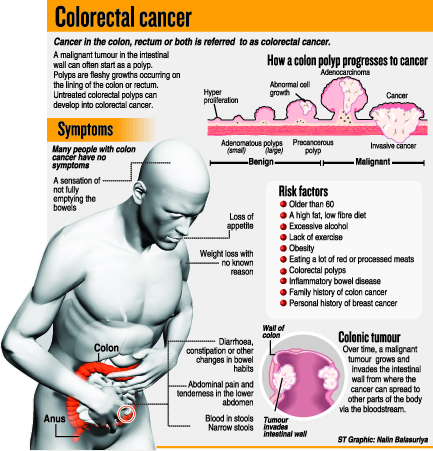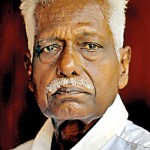The success story of ERAS
Five years have gone by and 78-year-old H.W. Goonesekera from Panadura has got a clean bill of health at the last check up which included a colonoscopy recently. Diagnosed with colorectal cancer, five years ago, after he had “irregular bowel movements”, usually he would have had to undergo surgery the ‘traditional’ way.
Things have changed though, with revolutionary management before and after surgery easing the patient’s discomfort as well as the need to resort to starvation to allow his bowel to heal.
Fortunately for Mr. Goonesekera, Consultant Surgeon Dr. Bawantha Dilshan Gamage had just returned after extensive training in laparoscopic colorectal surgery at the centre of excellence that is the Colchester University Hospital in the United Kingdom.
Trained under those considered among the best — Consultant Surgeon Tan Arulampalam of Sri Lankan origin and Prof. Roger Motson — Dr. Gamage was ready to introduce a different approach to colorectal surgery at the Colombo South (Kalubowila) Teaching Hospital’s Professorial Unit.
Enhanced recovery after colorectal surgery (ERAS) is the new concept that Dr. Gamage who is also a Senior Lecturer at the Faculty of Medical Sciences of the Sri Jayewardenepura University implemented, believed to be a first in Sri Lanka. And Mr. Goonesekera was the first patient to undergo this protocol five years ago.
The ‘traditional’ is contrasted with ERAS by Dr. Gamage who first deals with the pre-op preparations. He points out that traditionally in patients who have cancer in the rectum or colon and have to undergo surgery, the bowels are cleaned with medication and plenty of fluids. Usually, polyethylene glycol has to be taken before the operation.
“After surgery, we keep them fasting for three to four days, while giving them a lot of fluids intravenously during and after the operation,” he explains.
However, currentresearch has shown that the ‘traditional protocol’ delays patient recovery, MediScene learns, for with a lot of fluid there is an overload. Cleaning the bowel so thoroughly also causes it to go into paralysis due to an electrolyte imbalance.

Patient H.W. Goonesekera
“Therefore, regaining bowel function is delayed,” explains Dr. Gamage, adding that the thinking earlier was that giving food would impair the health of the joint which had been sutured together after the malignant part was excised.
Anastomosis would take longer resulting in a longer healing period. There could also be leaking, creating post-surgery problems, it was assumed. But the major disadvantages were having to keep patients fasting post-surgery and the hospital stay being prolonged to as much as seven days or more.
ERAS, however, has revolutionized the handling of these patients – instead of the traditional bowel-clearing medicine, for patients who have to undergo surgery for left-side colon and rectal surgery, only an enema is given on the morning of the operation. Meanwhile, no pre-op procedure is done in those who have to undergo surgery for right side colon cancer, according to Dr. Gamage.

Dr. Bawantha Gamage
And there is no starvation involved. The patient is given liquids soon after the anaesthesia wears off and some time later allowed to take solid food.
Fifty patients, both men and women, have undergone this procedure along with ERAS after Mr. Goonesekera since October 1, 2009. Proof that it has worked has come five years on, with Mr. Goonesekera having the final follow-up, his last colonoscopy and CT scan of the abdomen. All is well with his digestive system.
| Advantages of laparoscopic surgery Many are the advantages of laparoscopic or keyhole surgery for colorectal cancer, MediScene understands. The incision size is smaller, there is less blood loss while less pain and fewer days in hospital are part and parcel of this minimally-invasive procedure, says Dr. Gamage. Whereas traditionally in open surgery there would be a midline cut of about 10 inches on the patient’s abdomen, in laparoscopic surgery for colorectal cancer, there would be small incisions (cuts) for the four ports, it is learnt. The three five-mm cuts are for the laparoscope (camera) and two instruments that Dr. Gamage handles and the 12-mm cut for the bowel-joining stapler. Among the many advantages the surgeon has when performing the laparoscopic procedure is enlarged vision which allows easy identification of the fine structures in the abdomen. “In open surgery, the surgeon’s eye and operation site would be as far as 12 inches or more. Here the eye is practically at the tip of the camera-lens 3-4 cm away at the tip of the telescope. A magnified, high-definition view of the site is on the monitor,” says Dr. Gamage. Referring to less blood loss, he says that in open surgery there could be as much as 500ml of loss whereas in this laparoscopic procedure, it is less than100ml. “In open surgery, there is much handling of the bowel, as it has to be tucked into the upper right tummy and packed in gauze towels,” he says, adding that in this minimally-invasive procedure, the patient is positioned in such a way that his head is 60 degrees inclined downward, making the bowels move automatically in that direction. “We use gravity as the force of retraction to move the bowel away from the pelvis. This allows the surgeon good access. Once the procedure is over everything comes back to the normal position. This makes the recovery of the bowel faster.” As the procedure is also painless, the patient is mobilized soon after and begins walking. Therefore, the average hospital stay is about 3-4 days, he adds. |


